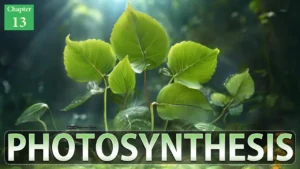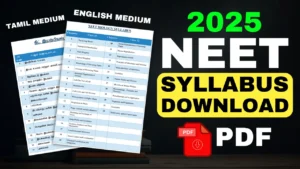Table of Contents
Plant Tissue System Notes
This article we will discuss about Plant Tissue System notes:- epidermal tissue system , ground tissue system & vascular tissue system
- Several tissues may collectively perform the same function
- A collection of tissue performing the same function is known as tissue system
- On the basis of location, position and structure, Sachs categorised tissues into three types of tissue system:- epidermal tissue system , ground tissue system & vascular tissue system
Epidermal tissue system
Epidermis
- Epidermis forms outermost layer of primary plant body and made up of elongated, compactly arranged cells
- Cells of epidermis are parenchymatous and hence they are living
- Mostly epidermis is single layered but multiple layered epidermis is also seen in leaves of Nerium, Ficus sp. etc
- In multi-layered epidermis of Ficus, certain bunch of grape like structure found called cystolith. Its made up of calcium carbonate crystals. The cells in which cystolith is called lithocyte
- Large water filled epidermal cells present in epidermis of monocot leaves are called bulliform or motor cells
- These are hygroscopic and help in rolling and unrolling of the leaves
Cuticle
- Epidermis is covered with a waxy layer called cuticle
- The thickness of cuticle depends upon adaptation of plant. It is thick in xerophytes, thin in mesophytes and absent in hydrophytes and roots
- Cuticle reduces transpiration
Stomata
- Epidermis is interrupted by stomata
- Stomata are found on epidermal layers of leaves, young stems and floral parts etc
- Help for transpiration and gaseous exchange
- Stomata consists of guard cells and subsidiary cells
Guard cells
- Specialised green epidermal cells present around the stoma are called guard cells
- Guard cells in dicots are kidney shaped and in monocots are dumb bell shaped
- Outer wall of guard cell is thin but inner wall is thick and inelastic
- Guard cells are controlling opening and closing of stomata
- When guard cells are turgid stomata open
- When guard cells are flaccid stomata close
Subsidiary cells
- Specialised epidermal cells surrounding the guard cells
- They provide support to the guard cells
Epidermal outgrowth
Root hair
- Found on root epiblema
- Root hairs are always unicellular
- Root hairs play an important role in absorbing water from the soil
Trichomes
- Epidermis of stem produce hairs called trichomes
- They are generally multicellular
- They may be branched or unbranched and soft or stiff
- Trichomes are of two types glandular (secretory) and nonglandular
- Trichomes help in preventing water loss due to transpiration
Functions of epidermis
- It is outermost layer of plant body so provide protection
- Root epidermis helps in absorption of water and mineral salts
- Stomata present in epidermis, its helps in interchange of gases and transpiration.
- Trichomes found on epidermis of stem secret substances with kill insects
Ground tissue system
- All tissues expect epidermis and vascular bundles constitute the ground tissue system
- Ground tissue system has two zones:- i) Extrastelar ground tissue ii) Intrastelar ground tissue
- No such clear differentiation is found in monocot stem
- In monocot stem endodermis, pericycle, pith and pith rays absent
- In case of leaves ground tissue is called mesophyll tissue and its not differentiated into cortex and pith
- The ground tissue system constitute the following parts:- cortex, pericycle, pith and pith rays
Cortex
It lies between epidermis and pericycle
It is further differentiated into 3 subdivisions:- hypodermis, general cortex and endodermis
a) Hypodermis
- Its present below epidermis in stem and absent in root
- Hypodermis in dicot stems is collenchymatous while it is sclerenchymatous in monocot stems
- Hypodermis gives mechanical support
b) General Cortex
- It is present next to the hypodermis
- Middle cortex of stem is parenchymatous
- Middle cortex in stem helps in temporary storage of food materials
- It has many intercellular spaces
- In dicot stem, it is present between hypodermis and endodermis
- In monocot stem, it is extends from below of hypodermis up to centre (Because endodermis, pericycle, pith and pith ray absent)
- In roots, it is present next to epidermis up to endodermis (As here hypodermis absent)
Endodermis
- Endodermis is found between general cortex and pericycle
- Innermost layer of cortex and single layered
- It is made of living parenchyma cells, barrel shaped, compactly packed and inter cellular space absent
- On endodermis starch grains also found hence it is also called starch sheath
- In root consists of certain bands or strips called casparian strips
- Casparian bands contain thickening of lignin, suberin and cutin
- In few cells of endodermis, casparian strips are absent. these cells are called passage cells
- These cells are found in front of protoxylem
- Endodermis acts as water dam and prevents movement of water from the stele to cortex
Pericycle
- Pericycle is boundary layer of stele
- In dicot stem, its multi-layered made of parenchyma and sclerenchyma
- In monocot stem, its absent
- In root, its single layered and made of parenchyma
- Pericycle of root is the seat of origin of lateral roots in dicots
- Adventitious roots are formed from parenchymatous pericycle
- When composed of parenchyma it stores food
Pith
- Made of parenchymatous cells
- It has many intercellular spaces
- In dicot stem, pith is very well developed
- In dicot root, pith is less developed
- In monocot stem, pith is absent
- In monocot root, pith is very well developed
- Pith is mostly stores water & food material
Pith rays
- Found in between vascular bundles and arise from pith
- In dicot stem, Medullary rays present
- In monocot stem, medullary rays absent
- In roots, medullary rays absent
- They are meant for lateral conduction of food and water
Vascular tissue system
- In plants vascular tissue system is their circulatory system designed to transport materials
- The vascular tissue system comprises of:- xylem and phloem and cambium (if present)
1. Xylem
- Xylem transports water and nutrients
On the basis of size and time of development xylem classified as two types:- protoxylem and metaxylem
I) Protoxylem
- First formed xylem
- Consists of smaller elements
- Contain large amount of parenchyma
- Developed directly from procambium
II) Metaxylem
- Later formed xylem
- Consists of larger sized elements
- Contain less amount of parenchyma
- Differentiated part of the protoxylem
Based on position of primary xylem in vascular bundle xylem classified as three types:- Endarch, exarch and mesarch
Endarch
- Protoxylem elements are situated closer to centre of axis
- Metaxylem develops periphery
- Centrifugal development
- Feature of stems
Exarch
- Protoxylem elements are directed away from centre of axis
- Metaxylem elements develop towards centre of axis
- Centripetal development
- Feature of root
Mesarch
- Protoxylem elements are in centre surrounded by metaxylem elements
- Feature of ferns
2. Phloem
- Phloem found in conduct foods made in the leaves to all other parts of the plant
On the basis of size and time of development of Phloem classified as two types:- protophloem and metaphloem
Protophloem
- First formed phloem
- Narrow sieve tubes
Metaphloem
- Formed after protophloem
- Sieve tubes are broader
3. Cambium
- Vascular cambium is lateral meristem & single layered
- In dicot stem & roots, located between xylem and phloem
- It has two kinds of cells:- Ray initials & fusiform initials
- Ray initials forms parenchymatous secondary pith rays
- Fusiform initials forms secondary xylem & secondary phloem
- In pteridophytes & monocots the procambium is fully utilised in formation of primary tissues and no meristematic cells are left in between the xylem and phloem. Because of this no secondary growth occur in these plants
- In gymnosperms and dicots, the procambium is not fully utilized and some meristematic cells are retained in vascular bundle and they form intra fascicular cambium. Because of this secondary growth occur in these plants
Based on presence & absence of cambium in vascular bundle 2 types
Open vascular bundle
- Cambium present
- Feature of dicots
- Because of presence of cambium secondary growth occur in dicots
Closed vascular bundle
- Cambium is absent
- Feature of monocot
- Secondary growth is absent in monocot
Types of vascular bundles
Depending on the arrangement of phloem & xylem, vascular bundles are following types:- Conjoint, radial and concentric vascular bundles
1) Conjoint Vascular Bundles
- Xylem and phloem are found on same radii
- Found in stems
- Conjoint vascular bundle are two types:- Collateral and Bicollateral Bundle
I) Collateral Bundle
- Phloem is found towards periphery and xylem towards centre
- Found in majority of stems
- Based on cambium it has two types of collateral bundle:
(a) Open collateral bundle: (Ex.Dicot Stem)
Cambium is present in between xylem and phloem
This type of bundle have secondary growth
(b) Closed collateral bundle (Ex.Monot Stem)
Cambium is absent in between xylem and phloem
This type of bundle do not have secondary growth
II) Bicollateral Bundle
- Xylem is sandwiched between phloem
- The sequence of vascular tissues is outer phloem, outer cambium, xylem, inner cambium and inner phloem
- Found in Cucurbita stem
Depending on the arrangement of phloem & xylem, vascular bundles are following types:- Conjoint, radial and concentric vascular bundles
2) Radial Vascular Bundle
- Xylem and phloem are found on different radii
- Xylem and phloem are found in alternate fashion
- Number of xylem = number of phloem
- Found in roots
3) Concentric Bundle
One type of vascular tissue surrounds the other is known as concentric bundle
In this bundle xylem either encircles or is encircled by phloem and accordingly the following two types are recognized:
(a) Amphivasal bundle:
Xylem encircles the central strand of phloem is known as amphivasal bundle
Also called leptocentric bundle
Ex. Dracaena, yucca
(b) Amphicribral bundle:
Phloem encircles the central strand of xylem is called as amphicribral bundle
Also known as hadrocentric bundle
Ex. Selaginella, lycopodium
For more detailed information about plant anatomy, download now full study material as PDF



![[PPT] The living world Class 11 Notes](https://rajusbiology.com/wp-content/uploads/2024/06/PPT-The-living-world-Class-11-Notes-300x169.webp)
